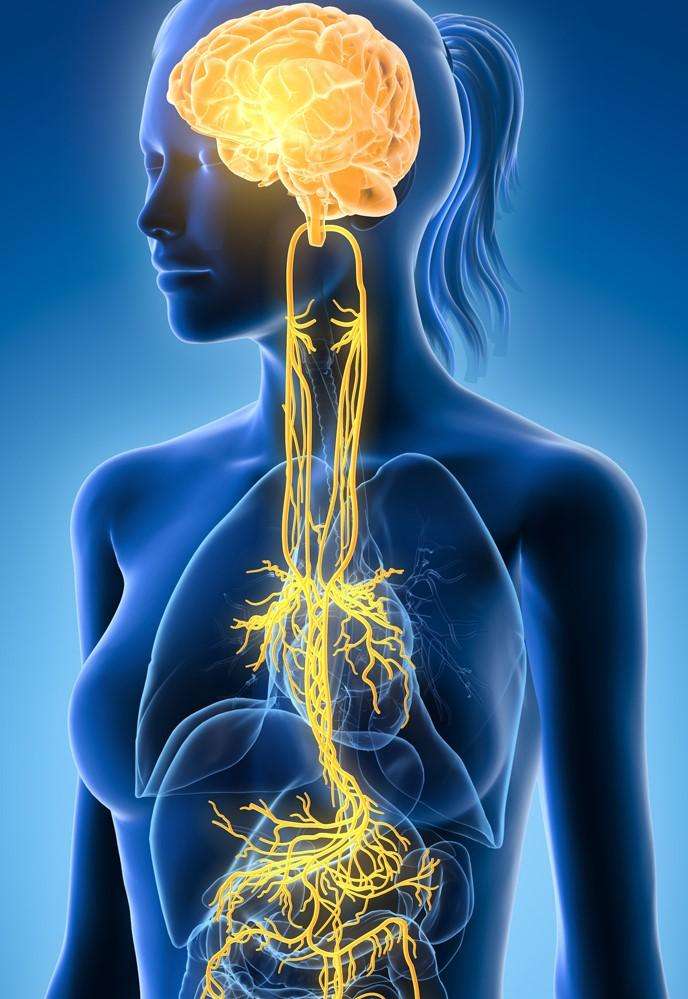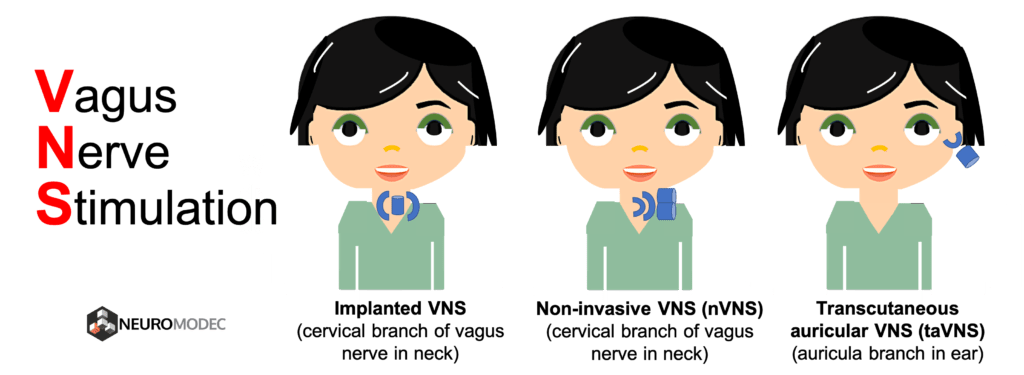76% of your brain
100% of your thorax
80% of your tummy.
 The vagus nerve is the longest and most complex of the cranial nerves in the human body. It is a pair of nerves that originate in the brainstem and extend down through the neck and chest to the abdomen. The vagus nerve is part of the parasympathetic nervous system, which helps to regulate a variety of bodily functions, including heart rate, digestion, and breathing.
The vagus nerve is the longest and most complex of the cranial nerves in the human body. It is a pair of nerves that originate in the brainstem and extend down through the neck and chest to the abdomen. The vagus nerve is part of the parasympathetic nervous system, which helps to regulate a variety of bodily functions, including heart rate, digestion, and breathing.
The vagus nerve has two branches: the left vagus nerve and the right vagus nerve. The left vagus nerve is responsible for controlling the muscles of the larynx (voice box) and the right vagus nerve controls the muscles of the pharynx (throat). Both branches of the vagus nerve also innervate (supply nerve fibers to) the heart, esophagus, and other organs in the chest and abdomen.
The vagus nerve is involved in a number of important bodily functions. It helps to regulate heart rate and blood pressure by sending signals to the heart to slow down or speed up. It also plays a role in digestion by controlling the muscles of the digestive system, including the muscles of the esophagus, stomach, and intestines. It also helps to regulate the production of digestive juices and enzymes.
The vagus nerve is also involved in the regulation of breathing and the control of the larynx. It helps to control the muscles of the larynx, which are responsible for producing sound, and it also helps to regulate the muscles of the bronchi, which are the tubes that carry air to and from the lungs.
In addition to its role in bodily functions, the vagus nerve is also involved in the regulation of emotions. It is thought to play a role in the production of certain neurotransmitters, such as serotonin and dopamine, which are involved in mood regulation. Research has also suggested that stimulating the vagus nerve may be helpful in reducing symptoms of anxiety and depression.
The vagus nerve is vulnerable to damage or dysfunction, which can lead to a number of health problems. For example, damage to the vagus nerve can cause problems with digestion, including difficulty swallowing and chronic acid reflux. Damage to the vagus nerve can also affect heart rate and blood pressure, and it can lead to problems with the muscles of the larynx, resulting in difficulty speaking or breathing.
Overall, the vagus nerve is an important part of the human body, and it plays a vital role in the regulation of a number of bodily functions, including digestion, heart rate, and breathing. It is also involved in the regulation of emotions, and it is vulnerable to damage or dysfunction, which can lead to a variety of health problems.
So as a conclusion:
The vagus nerve is a branch of the nervous system that runs from the brain, down the neck, to many organs including the heart, lungs, and digestive systems. Stimulation is applied to the vagus nerves (vagus nerve stimulation) to activate the vagus nerves which in turn activates the brain or peripheral organs.

There are three types of Vagus Nerve Stimulation (VNS) devices:
- Implanted devices which include a component inside the beck on the cervical (neck) branch of the vagus nerve. Often then the generic “VNS” is used, this is referred to as implanted cervical device. The device is on most of the time. Invasive VNS is predominantly used in epilepsy and depression, though additional applications are being explored. Every surgery is associated with risks, but after implantation the most common side-effects is temporary coughing and shortness of breath.
- Non-invasive cervical vagus nerve stimulation where a device is placed against the outside of the neck. The device is used as needed. Non-invasive cervical VNS is predominantly used in headache or migraine.
- Non-invasive stimulation of the auricular branch of the vagus nerve, which is a branch of the vagus nerves located in the ear. This approach is called transcutaneous auricular Vagus Nerve Stimulation (taVNS) and includes clip or inset placed in the ear. The device is used as needed. taVNS is investigated for many types of neurological and psychiatric disorders including epilepsy, depression, and PTSD, as well as a method to reduce inflammation, and shows promise in rheumatoid arthritis and other inflammatory diseases.



